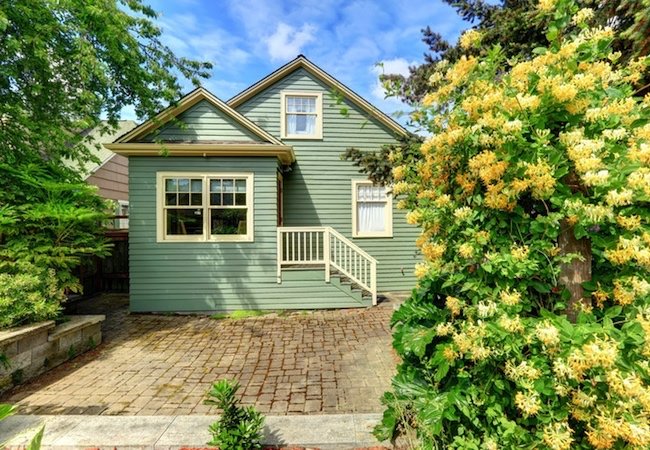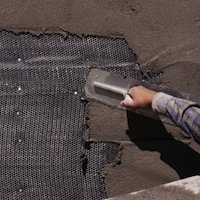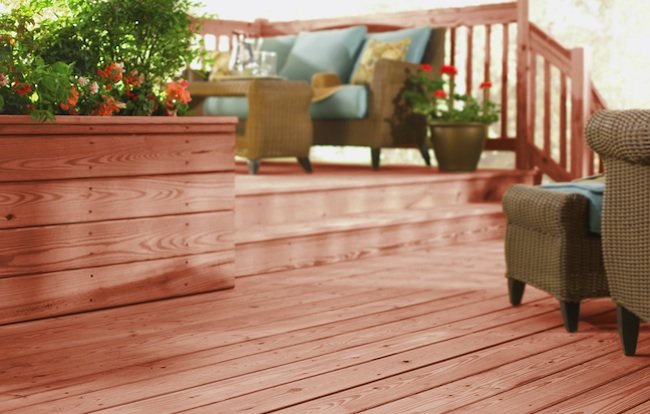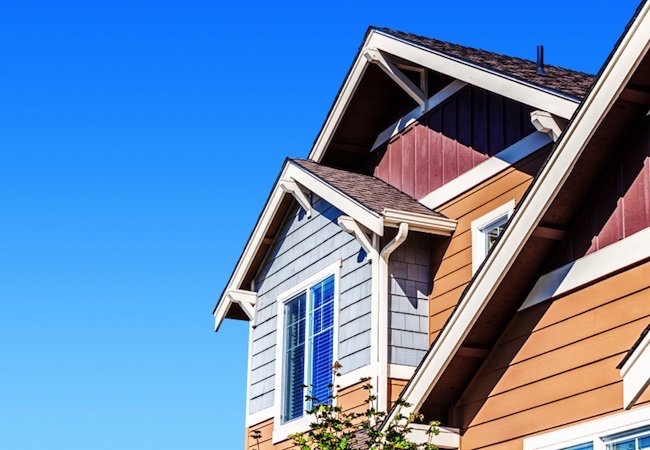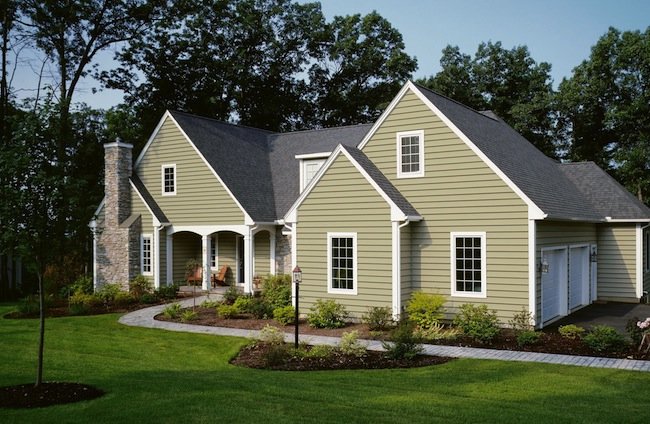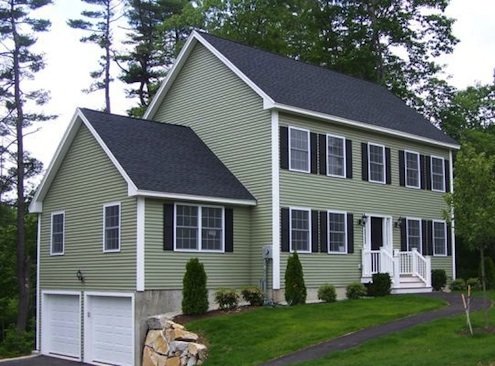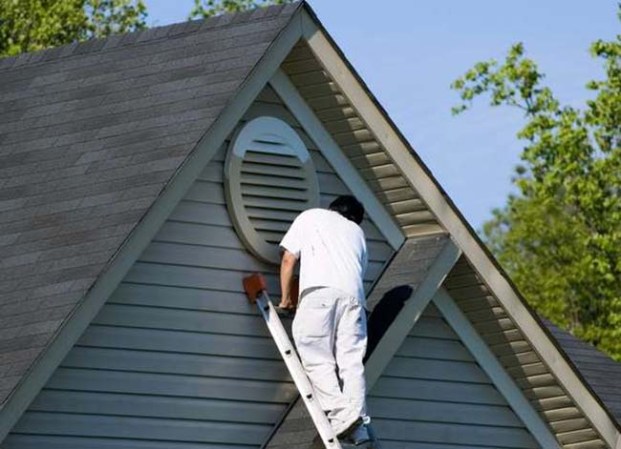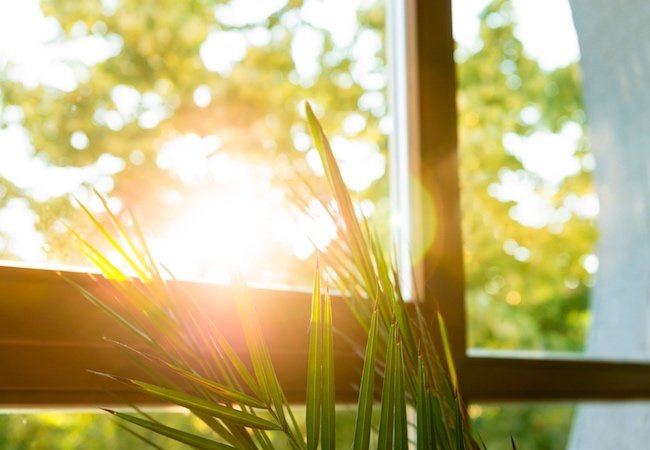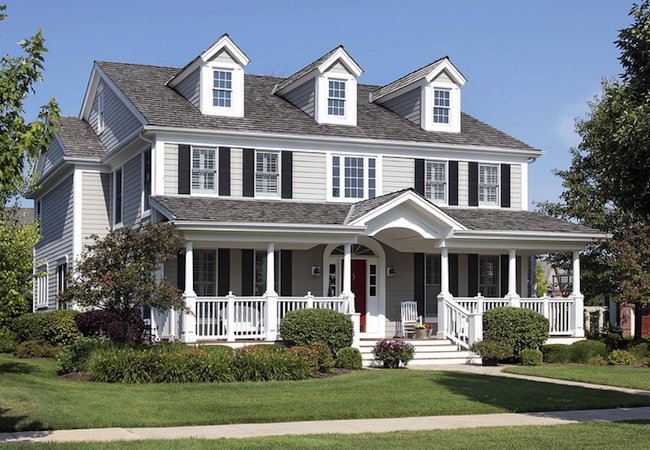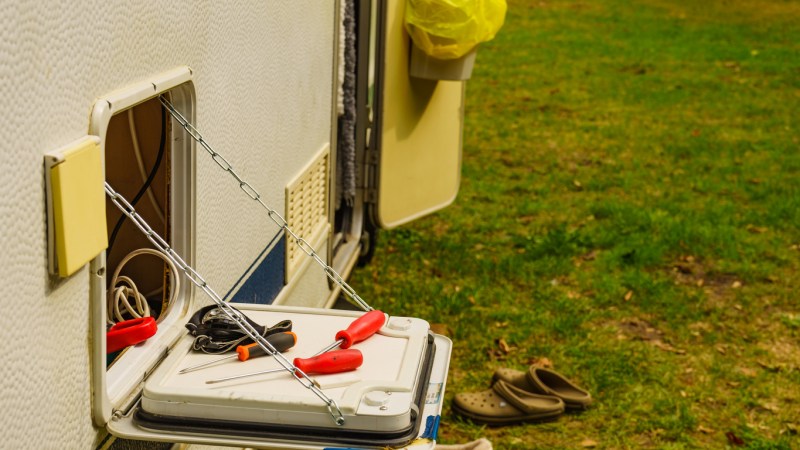We may earn revenue from the products available on this page and participate in affiliate programs. Learn More ›
Day after day, year after year, exterior siding protects your home from the elements. It’s the first line of defense against an array of natural challenges, including howling winds, driving rain, hot sun, and bitter cold. Under the circumstances, it’s no wonder that grit and grime tend to accumulate over time. Savvy homeowners, as a result, incorporate exterior cleaning into their semiannual maintenance routines for a number of compelling reasons.
First, it cannot be ignored that the condition of your siding significantly influences the curb appeal of your home—that is, how it appears to visitors and casual passersby. Second, giving your siding a good once-over a few times a year gives you the chance to identify and address any problems early on, before they pick up steam and become extensive, expensive-to-resolve headaches that could steal years from the expected lifespan of the siding.
Indeed, from both an aesthetic and pragmatic perspective, it’s never wise to go long without giving a thought to the wood, brick, stucco, or vinyl that clads your home. Generally speaking, experts recommend seasonal inspection and cleaning as needed. But according to Jim Eldredge, a product manager with Sears Home Services, it’s essential to remember that “different siding materials carry different—often very different—care requirements.”
Continue reading below for expert advice on cleaning and caring for many of today’s best-known and most widely installed types of exterior siding.
Cleaning Wood Siding
A perennial favorite, wood siding boasts timeless, undeniable beauty, but of all siding types, Eldredge says, “it’s probably the most demanding.” For one, it needs to be painted (or stained) approximately every five years. Also, because wood naturally expands and contracts, “you regularly need to check all the windows and doors, reapplying caulk if and when appropriate,” he adds. Plus, for wood siding to not only perform well but look good too, it requires annual or twice-yearly cleaning. Mostly, Eldredge says, “you can get away with using soapy water and a soft-bristle brush.” But in special cases—say, to remove mold, mildew, or algae stains—you need to scrub with a solution of bleach (one part) and water (four parts). A note of caution: “Don’t use a pressure washer,” Eldredge warns. “It’d be faster and easier than cleaning by hand,” he continues, “but a lot of times, it does way more harm than good.”
Cleaning Brick Siding
A centuries-old siding material that typically lasts a lifetime, brick has long thrilled homeowners with its historical appearance, stately impression, and aura of strength. That said, as durable as brick may be, Eldredge points out that “its longevity partly depends on annual cleaning.” Under ideal conditions, so long as the siding remains in decent condition—with neither chipped, flaking brick nor cracked, crumbling mortar—maintenance involves thoroughly spraying down the entire house. Complicating matters is that, according to Eldredge, “parts of the structure that don’t receive much sun may get mold, mildew, or moss growth.” Double-check those shaded areas, and if you discover a problem, don’t hesitate to bring out the bleach. After thoroughly soaking the area to make the brick more absorptive, scrub in a mixture of bleach and water—about a cup of the former and a gallon of the latter.
Cleaning Stucco Siding
Portland cement, sand, and lime or gypsum combine to create stucco, a material with an ancient heritage that today remains as popular ever. Versatility ranks as one of its main advantages—the material can take on a wide variety of colors and textures. The downside? Its rigid composition makes it vulnerable to chipping and cracking. Competent do-it-yourselfers can patch small areas on their own with store-bought stucco fillers, but for larger repairs, “it’s wise to hire a pro,” Eldredge recommends. Like plastering, properly applying stucco takes, as Eldredge puts it, “the kind of skills you develop only after years of experience.” You don’t need to be an expert to clean the material, though. Spray the exterior with warm, soapy water. It’s important to “start at the foundation level and work upward,” he says. “That way, the stucco near the base of the building doesn’t absorb gallons of dirty water.”
Cleaning Vinyl Siding
“There’s a reason vinyl has become the most popular type of siding in America,” Eldredge says. “It’s virtually maintenance-free.” Continuing, he notes that options like WeatherBeater vinyl siding, installed exclusively by Sears Home Services, actually “deliver the look of traditional wood siding, just without all the hassle.” For instance, vinyl doesn’t need to be refinished; it remains colorfast for years. Plus, vinyl is not susceptible to many of the factors that harm other materials—rot, for instance, and pests like termites. If your vinyl siding has gotten a bit dirty, don’t worry—cleanup couldn’t be easier. Even tough stains tend to come out with a solution of water and mild detergent, but as Eldredge attests, “more often than not, cleaning vinyl means nothing more than rinsing with a garden hose.” In the end, “that’s what makes it a great choice for people who don’t have the time or energy for home upkeep.”
When properly cared for, exterior siding can last for decades. But no siding lasts forever. There comes a time when cleaning and repairs won’t cut it anymore—a time when, in order to guarantee continued protection from the elements, you need to install brand-new siding. Fortunately, there are many benefits to be gained from an upgrade. Eye-catching curb appeal, higher home resale value, improved energy efficiency, and dramatically lower maintenance requirements are just some of the reasons homeowners choose a category leader like WeatherBeater. Though re-siding can be an overwhelming prospect, companies like Sears Home Services guide you through the entire project, all the way from selection of the new material to the final installation. Best of all, in contrast with many local contractors, the Sears brand offers a Satisfaction Guarantee. Schedule a free in-home consultation as soon as you’re ready.
This post has been brought to you by Sears Home Services. Its facts and opinions are those of BobVila.com.

